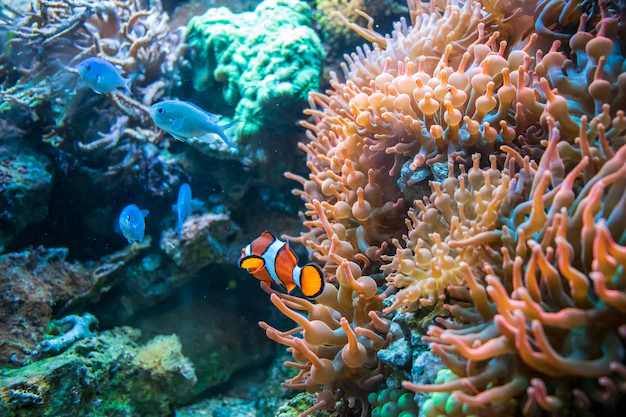The Guardians of the Ocean: Unveiling the 5 Vital Role of Living Corals


Page Contents
A Bustling Metropolis of Color, Diversity and Ecological Significance
Beneath the surface of the world’s oceans lies a bustling metropolis of color, diversity, and ecological significance: coral reefs. At the heart of these vibrant ecosystems are living corals, often referred to as the architects of the underwater world. In this article, we’ll delve into the multifaceted role of living corals, exploring their significance in sustaining marine life, contributing to global biodiversity, and influencing the overall health of our oceans.


The Interconnection of Environmental Psychology and the Living Corals
The interconnection between environmental psychology and the role of living corals unveils a profound relationship that transcends the physical boundaries of the underwater world. Environmental psychology, which examines the intricate connections between individuals and their environments, plays a crucial role in how we perceive and respond to the vital role of living corals in marine ecosystems. The captivating beauty and biodiversity of coral reefs, anchored by living corals, have the potential to evoke emotional responses and create a sense of wonder and love among people. Understanding the importance of living corals in supporting marine life and contributing to the overall health of our oceans can have a positive impact on human attitudes and behaviors toward conservation.

The Guardians of the Ocean: Unveiling the 5 Vital Role of Living Corals
- Ecosystem Engineers:
Living corals are the ultimate backbone of coral reef ecosystems, serving as natural engineers that shape the physical structure of the vast underwater landscape. Coral polyps secrete calcium carbonate skeletons, forming intricate structures that provide shelter, hiding places, and breeding grounds for an astonishing array of marine species. The complex yet awesome architecture of coral reefs supports a delicate balance of life, facilitating the interactions between various organisms.
- Biodiversity Hotspots:
Coral reefs are renowned as biodiversity hotspots, housing a quarter of all known marine species despite covering a mere 0.1% of the ocean’s surface. The labyrinthine structure of living corals creates an array of microhabitats, catering to the diverse needs of fish, invertebrates, and other marine organisms. The interdependence of these species within the reef ecosystem highlights the crucial role of living corals in fostering biodiversity.
- Carbon Sink and Nutrient Cycling:
Living corals play a significant role in carbon cycling and nutrient dynamics in the ocean. Through a symbiotic relationship with photosynthetic algae called zooxanthellae, corals absorb sunlight and convert it into energy, providing vital nutrients for the entire reef ecosystem. Additionally, corals contribute to the sequestration of carbon dioxide, helping to mitigate the impacts of climate change by storing carbon in their calcium carbonate skeletons.
- Shoreline Protection:
Beyond their role in supporting marine life, coral reefs, with living corals at their core, offer a natural barrier against coastal erosion and storm surges. The intricate structure of reefs absorbs and dissipates wave energy, protecting shorelines from the devastating impact of storms. Coastal communities often rely on the protection provided by coral reefs for their livelihoods and infrastructure.
- Threats and Conservation:
Despite their crucial role, living corals face a myriad of threats, primarily driven by human activities. Climate change-induced coral bleaching, overfishing, pollution, and destructive fishing practices jeopardize the health of coral reefs worldwide. Conservation efforts, including marine protected areas, sustainable fishing practices, and coral restoration projects, are essential to safeguard the future of living corals and the ecosystems they support.

Planet’s Marine Environments
Furthermore, environmental psychology aids in crafting effective communication strategies to convey the urgency of preserving these ecosystems, fostering a collective responsibility to address global challenges such as climate change and habitat degradation. In essence, the interplay between environmental psychology and the role of living corals underscores the interconnectedness of human well-being and the health of our planet’s marine environments.
Conclusion
Living corals are not just mesmerizing structures beneath the waves; they are the guardians of the ocean, playing a vital role in maintaining the health and balance of marine ecosystems. As we face unprecedented challenges such as climate change and habitat degradation, understanding and protecting the role of living corals becomes paramount. Through global cooperation, sustainable practices, and a collective commitment to marine conservation, we can ensure that these extraordinary organisms continue to thrive and fulfill their essential role in the intricate dance of life beneath the surface of our seas.







